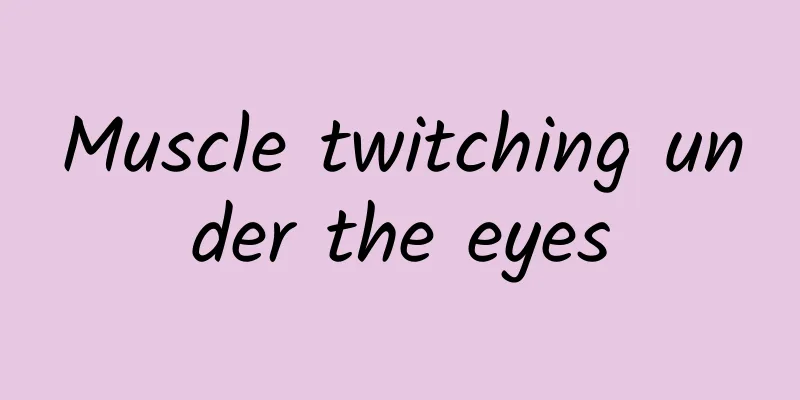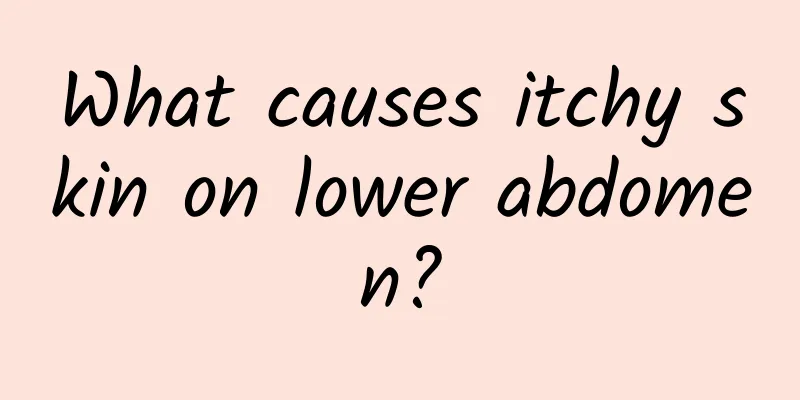Muscle twitching under the eyes

|
Muscle twitching under the eyes is the main symptom of eyelid spasm. If this problem occurs, if the symptoms are mild and do not last long, no special treatment is required. However, if this symptom persists for a long time, active treatment is needed, otherwise if the condition worsens, it will have a greater impact on people. There are generally three methods to treat eyelid spasm: medication, botulinum toxin treatment and surgical treatment. 1. Drug treatment This is also the first choice treatment for blepharospasm. Commonly used drugs include clonazepam, haloperidol, tiapride, benzhexol, etc. Some patients will have certain effects in the initial stage of the disease, but as the course of the disease prolongs, the efficacy will gradually decrease, or the patient will stop taking the drug because of intolerance of the side effects of the drug. Oral medications include: (1) dopamine receptor antagonists, such as haloperidol, tiapride, inosine, etc.; (2) γ-aminobutyric acid drugs, such as valproate, sodium valproate, etc.; (3) anticholinergic drugs, such as antan, etc.; (4) tranquilizers, such as diazepam, clonazepam, etc.; (5) antidepressants, such as amitriptyline, apuram, etc.; (6) topiramate, the first dose is 25 mg/day, and the dose is gradually increased to 75 mg after 4 weeks, twice a day; (7) lumbar puncture: intrathecal injection of dexamethasone 5 mg + 1 vial of vitamin B12 + 1 vial of cerebroside carnosine, 2-3 times a week. 2. Botulinum toxin treatment This is currently a relatively effective method for treating blepharospasm. It reduces the degree of spasm by injecting a certain amount of botulinum toxin into the upper and lower eyelids. The effect of botulinum toxin injection is obvious, but the duration of the effect varies from person to person, mostly between one to several months. After the effect becomes ineffective, the injection can be repeated. The biggest problem with the current use of botulinum toxin treatment is that some people are allergic to botulinum toxin, cannot accept the side effects of botulinum toxin, or the effect is not obvious, so botulinum toxin injection treatment is also limited in application. 3. Surgical treatment What is certain at present is that in patients with bilateral blepharospasm, the descending nerve impulses from the facial nerve are significantly hyperactive, which is also the direct cause of blepharospasm. Therefore, surgical operations targeting the facial nerve attempt to weaken the significantly hyperactive descending nerve conduction. Good results can be observed in some patients, but not all patients can benefit from surgery. Therefore, the current surgical treatment is only a supplementary treatment option for patients who have not responded to drug therapy and botulinum toxin treatment, and the choice needs to be cautious. Treatment of residual symptoms after surgery: Give the formula drug injection beside the superficial temporal artery + multiple injections into the eyelid muscle, once a day, one course of 14 days, generally repeated 2-4 courses, most of the patient's residual symptoms can be significantly alleviated or cured. |
<<: Muscle twitching under the eye
>>: White particles under the eyes
Recommend
There is a pimple on the waist
The waist is a very important part for people. It...
What is missing from hand tremors?
Sometimes when we feel very bored, we will shake ...
Leucorrhea turns yellow when it dries on underwear
In addition to the fact that menstruation will ge...
What medicine should I use for rotten fingers?
In summer, the weather is quite hot, so many frie...
Can chlortetracycline ointment treat body odor?
Body odor is a common disease. Having body odor c...
How to treat eye floaters
Eye floaters are more common in summer, mainly be...
Anal pain and blood when defecating
If your anus is painful and bleeding during bowel...
Can a woman get pregnant during ovulation?
Women are a complex group of animals, and the mos...
The pros and cons of back bleeding
Bleeding from the back is a relatively traditiona...
How to treat tongue pain
In our daily life, if we get angry or accidentall...
What medicine should I take for insomnia caused by heart-kidney disharmony?
You can take medicine for insomnia caused by dish...
What should I do if I have bloating when sleeping?
Many people often find that they have severe bloa...
Neck rustling when turning head
The neck is a part of our limbs that is used most...
What acupoints should I press for stomach discomfort?
When eating, do not eat food that is too raw or c...
Dry and peeling glans without pain or itching
The glans is such an important part that if there...









